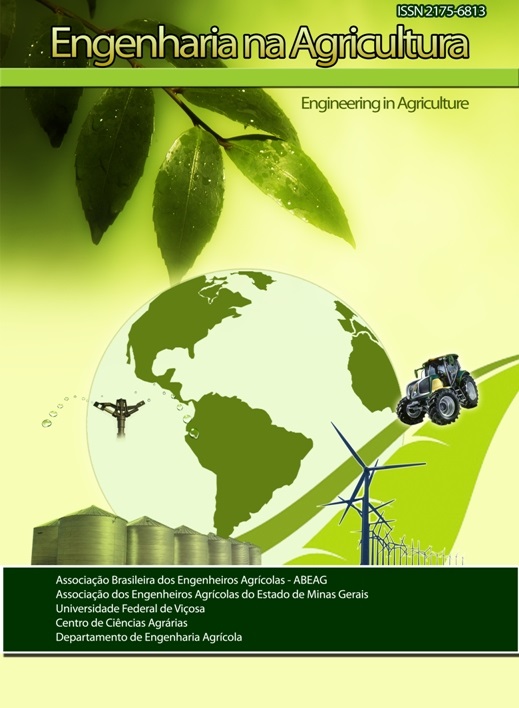POTENCIAL DE CONTAMINAÇÃO DO SOLO APÓS PROCESSO DE COMPOSTAGEM EM PÁTIO NÃO IMPERMEABILIZADO
DOI:
https://doi.org/10.13083/reveng.v25i4.759Keywords:
Resíduo Sólidos, Nitrato, LixiviaçãoAbstract
The aim of this study was analyse leaching of soil profile, in 0,2 and 0,5 meters of deep, through chemical elements( nitrate, sodium, potassium and phosphor) contained in the leachate percolated from composting piles of university restaurant food waste. The research was conducted at Federal University of Lavras. The composting piles were built based on the carbon to nitrogen (C:N) ratio of each material to be composted. The composted wastes were food scraps from University restaurant at Federal University of Lavras, sludge from Sewage Treatment Plant, Maravalha/ sawdust and grass (Panicum maximum Jacq cv Colonião). Were evaluated four treatments, as described: T1 (grass, food waste from university restaurant and water); T2( grass, food waste from university restaurant, sludge and water); T3 (Maravalha/ sawdust, food waste from university restaurant and water) and T4 (Maravalha/ sawdust, waste from university restaurant, sludge and water). After 120 days, it occurred increase of sodium concentration in T1, T2, T3 and T4 due to presence of food waste of University restaurant in all treatments. The concentrations of potassium obtained higher values in T1 and T2, in 0.20 m, due to the presence of grass. There was no increase in Nitrate in 0.2 m, after 120 days. However in T2 and T4 were observed high values of this element in 0.5 m, because of the presence of sludge in treatment’s composition. Thus with nitrate leaching in low layers, it is necessary waterproofing the soil, in order to avoid contamination in water table.Downloads
Downloads
Published
How to Cite
Issue
Section
License
Authors who publish with this journal agree to the following terms:
The author(s) authorize(s) the publication of the text in the journal;
The author(s) ensure(s) that the contribution is original and unpublished and that it is not in the process of evaluation by another journal;
The journal is not responsible for the views, ideas and concepts presented in articles, and these are the sole responsibility of the author(s);
The publishers reserve the right to make textual adjustments and adapt texts to meet with publication standards.
From submission, the author is fully conceding the paper's patrimonial rights to the publication, but retaining the owner of its moral rights (authorship and paper's identification) according to Creative Commons Attribution-Noncommercial.








 Licensed by
Licensed by 